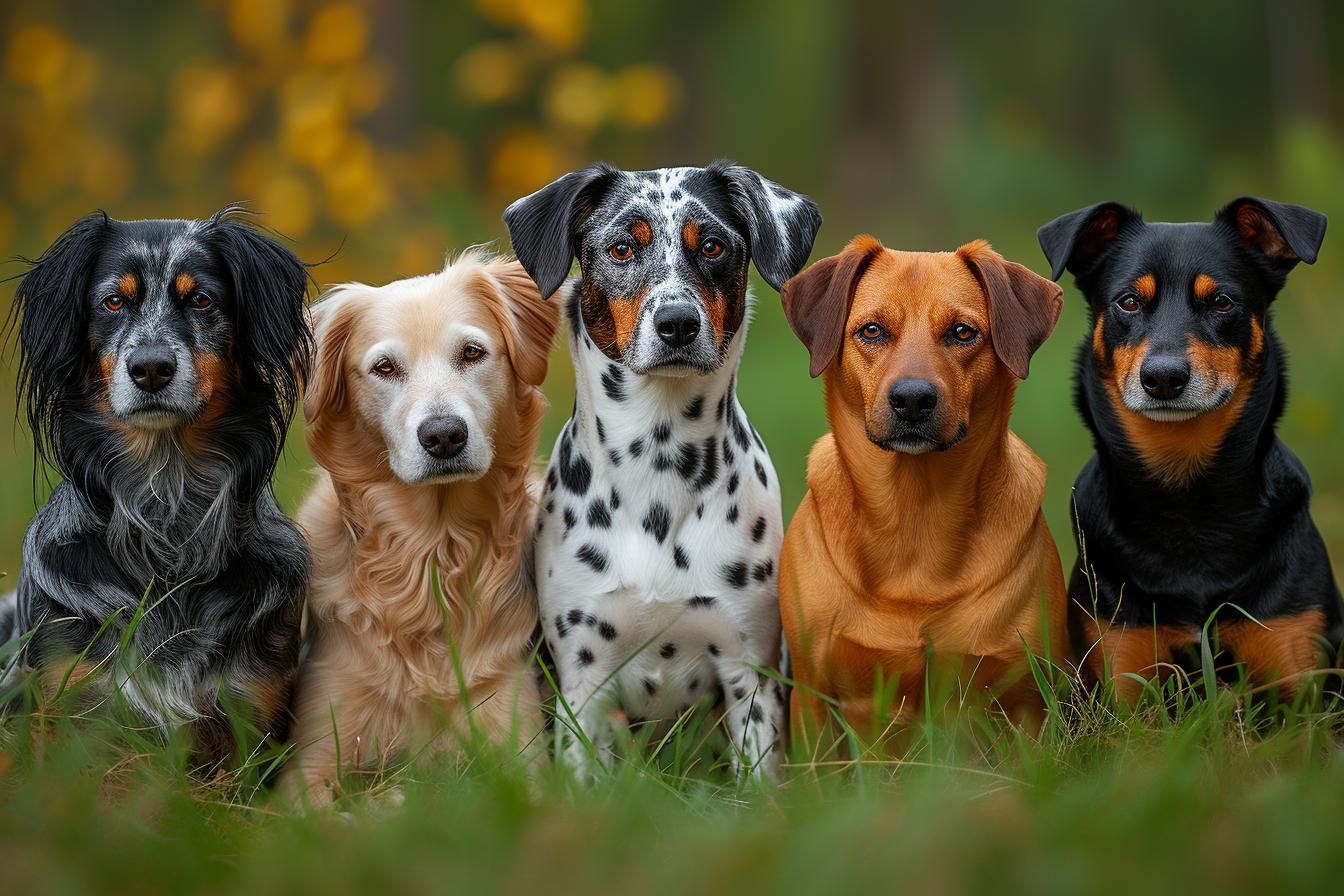Adopting a dog is a decision that should always be carefully considered, especially when it comes to certain breeds that are known to be more difficult to train. Various reasons can make dog training more challenging, from the intrinsic needs of the breed to specific behavioral characteristics. In this article, we will explore the 5 dog breeds considered to be the most difficult to train. We will discuss their characteristics, share training tips, and highlight the measures to take before adopting them. For enthusiasts eager to learn more, we will rely on knowledge relayed on the animal.ch website, without directly citing it. If you are considering welcoming a Husky, Dalmatian, Shiba Inu, Shar Pei, or Dachshund into your home, it is essential to know the challenges that entails in order to make the best possible choice for you and your future four-legged companion.
Huskies: between independence and the need for space
The Siberian Husky, with its wolf-like appearance and penetrating gaze, is a true star in the canine world. Renowned for its endurance and historical role as a sled dog, this breed possesses great independence. Training a Husky can be a real challenge, as they tend to have their own “mind.” To succeed, it is crucial to provide them with enough space to exercise daily and start their training from a young age with firmness and consistency. A gentle but consistent approach is recommended, with stimulating activities to channel their energy.
Dalmatians: assertive temperament requiring boundaries
Famous for their unique spots and elegant appearance, the Dalmatian is a dynamic and intelligent dog. Their assertive temperament can, however, make training complex if clear boundaries are not established from the start. These dogs learn quickly but can be stubborn. Therefore, it is important to start training early in order to establish a clear hierarchy, using positive reinforcement and avoiding harshness, which could backfire. Confidence and consistency are essential with Dalmatians.
Shiba Inu: patience in the face of disobedience
The Shiba Inu, a Japanese breed becoming increasingly popular, is known for its small size and proud expression. Despite its small stature, the Shiba Inu can be particularly stubborn and independent, sometimes even insubordinate. This dog requires great patience from its owners and a highly structured education. The use of games and rewards is recommended to gain their interest. Positive reinforcement and encouragement are key to establishing good communication with a Shiba Inu.
Shar Pei: a unique character requiring a specific approach
The Shar Pei is immediately recognizable by its wrinkled skin and “hippopotamus” face. This ancient breed is marked by a pronounced independence and a certain emotional distance towards strangers. They are generally not dogs that seek to please, which can complicate training. The Shar Pei needs an owner who offers them specific education, based on mutual respect and understanding of their needs. Training sessions should be short, consistent, and full of affection to achieve the best results.
Dachshund: determination and need for attention
Dachshunds are often perceived as cute and harmless companion dogs, but they are actually equipped with a strong character. Originally hunting dogs, these small animals are very determined and can be stubborn during their training. They need clear direction and regular mental and physical stimulation. Education should be based on gentle firmness and constant attention. Physical exercise is also essential to prevent the Dachshund from developing destructive behaviors due to boredom.
Properly caring for a difficult-to-train dog breed is a serious commitment that requires personal investment and a genuine willingness to understand and meet the specific needs of your companion. Each of these dogs has its own peculiarities and requires education tailored to their character. Before adopting one of these companions, it is imperative to consider whether your lifestyle and training abilities are compatible with their needs. The key is to educate yourself as a master before being able to train a dog. As a result, your home and your new four-legged best friend will embark together on a balanced and fulfilling life.







